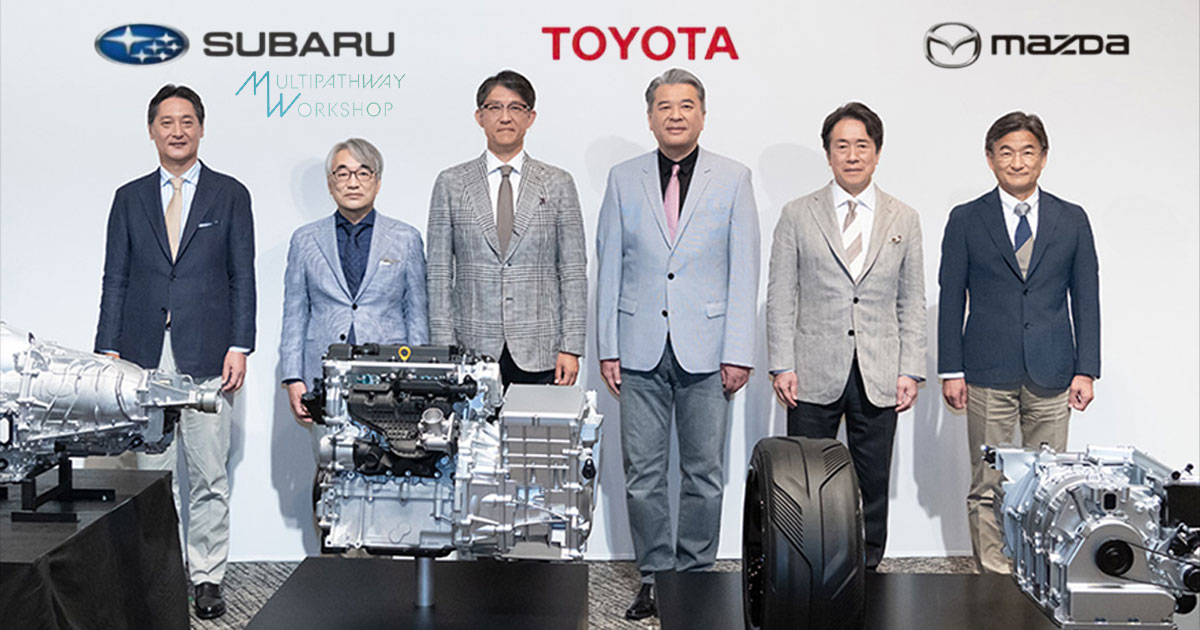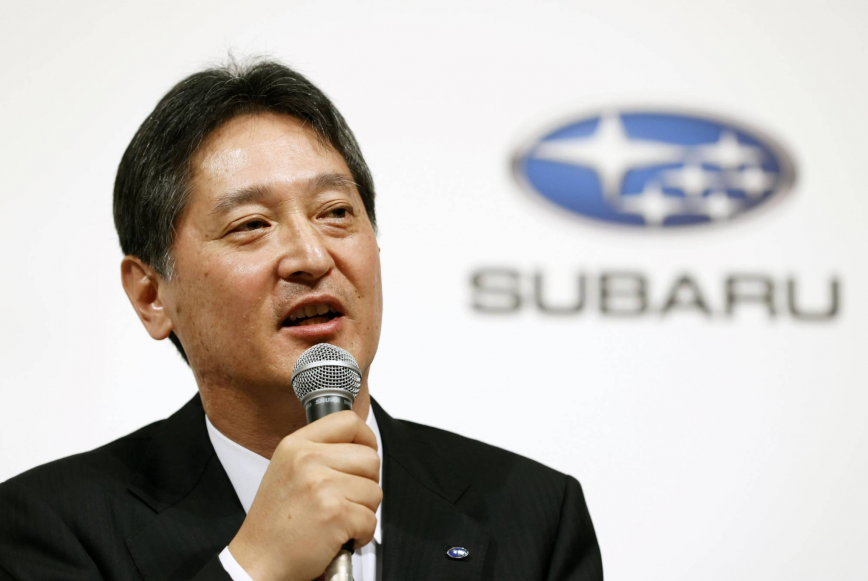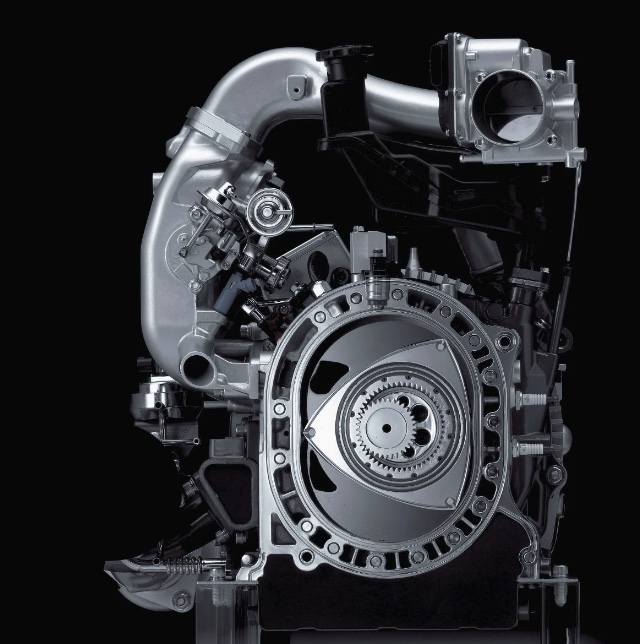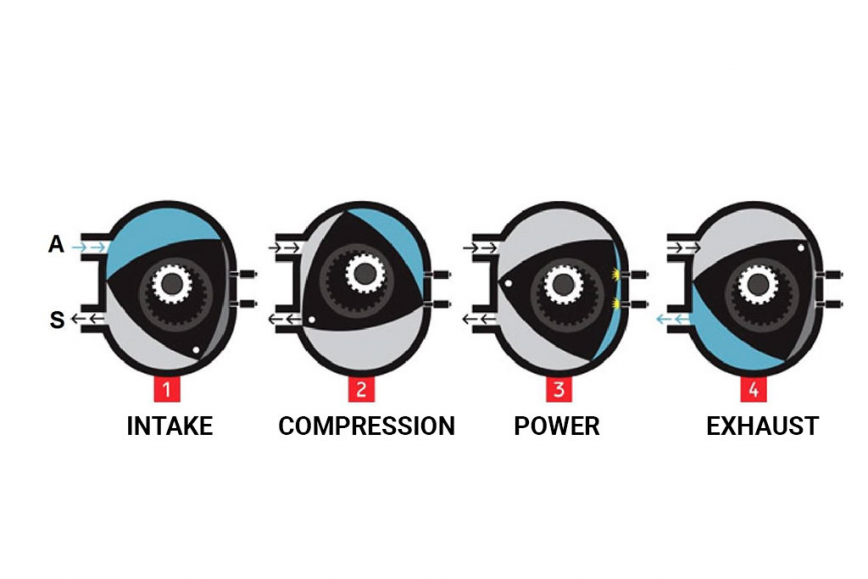Subaru, Toyota, Mazda Team Up on New Carbon-Neutral Engines

In an exciting move toward a sustainable future, Subaru, Toyota, and Mazda are joining forces to develop advanced combustion engines designed for electrification and compatibility with carbon-neutral fuels. This collaborative effort, termed the “multi-pathway” approach, aims to combat carbon emissions and set a new standard in the automotive industry.
The Multi-Pathway Approach
The “multi-pathway” approach refers to the diverse strategies these automakers are employing to achieve carbon neutrality. Instead of focusing solely on electric vehicles (EVs), they are exploring a variety of technologies and fuels to reduce emissions. This includes developing engines that can run on alternative fuels like liquid hydrogen and synthetic fuel, which have the potential to significantly lower carbon footprints compared to traditional fossil fuels.
Individual Strengths, Collective Goals
Each company brings its unique expertise to the table, continuing to develop its signature powertrains. Subaru remains committed to its iconic boxer engines, Toyota advances its renowned in-line four engines, and Mazda focuses on perfecting its rotary engines. By leveraging their individual strengths, these companies aim to create highly efficient and environmentally friendly engines that can integrate seamlessly with hybrid systems.
Subaru’s Commitment
Subaru’s president and CEO, Atsushi Osaki, emphasized the importance of a collective effort in achieving a carbon-neutral society. “Achieving a carbon-neutral society is a challenge that must be undertaken by all of Japan’s industries and society as a whole,” Osaki stated. Subaru’s commitment to this collaboration highlights its dedication to sustainability and innovation in the automotive industry.

Toyota’s Vision
Toyota, a pioneer in hybrid technology, sees this collaboration as a natural extension of its long-standing efforts to reduce emissions. The company’s experience with hybrid powertrains and alternative fuels positions it well to contribute significantly to this joint endeavor. Toyota’s in-line four engines, known for their reliability and efficiency, will play a crucial role in developing new combustion engines compatible with carbon-neutral fuels.
Mazda’s Innovation
Mazda’s rotary engines have always stood out for their compact design and smooth operation. In this collaboration, Mazda aims to enhance these engines further, making them compatible with electrification and alternative fuels.

This effort aligns with Mazda’s broader strategy of reducing emissions while maintaining the driving pleasure that its engines are known for.

The Role of Carbon-Neutral Fuels
The development of engines compatible with carbon-neutral fuels is a cornerstone of this initiative. Liquid hydrogen and synthetic fuels offer promising alternatives to conventional gasoline and diesel. These fuels can be produced with minimal carbon emissions and, when used in advanced combustion engines, can provide a cleaner energy source for vehicles.
The Impact on Hybrid Vehicles
Hybrid vehicles are a key focus of this collaboration. By integrating the new engines with electric powertrains, the automakers aim to create vehicles that are not only more environmentally friendly but also offer superior performance and efficiency. This hybrid approach allows for a gradual transition to full electrification, providing consumers with practical and versatile options in the interim.
Industry-Wide Implications
This collaboration between Subaru, Toyota, and Mazda sets a significant precedent in the automotive industry. It demonstrates that major competitors can come together to address global challenges, such as carbon emissions, by pooling their resources and expertise. This cooperative spirit is likely to inspire other automakers to explore similar partnerships and innovations.
A Step Toward a Sustainable Future
The efforts of Subaru, Toyota, and Mazda represent a crucial step toward a sustainable future. By developing engines that can run on carbon-neutral fuels and integrating them into hybrid systems, these companies are paving the way for a new generation of vehicles. These advancements will not only help reduce greenhouse gas emissions but also ensure that consumers have access to reliable and efficient transportation options.
Consumer Benefits
For consumers, this collaboration means more choices and better options. The new engines and hybrid systems will offer improved fuel efficiency, lower emissions, and potentially lower operating costs. Additionally, the continued development of alternative fuels could lead to more widespread availability and affordability, making it easier for drivers to adopt environmentally friendly technologies.
The Road Ahead
As Subaru, Toyota, and Mazda continue their collaboration, the automotive world will be watching closely. The success of this initiative could reshape the industry, influencing how vehicles are designed, powered, and perceived. With their combined expertise and commitment to sustainability, these companies are well-positioned to drive meaningful change and set new standards for the future of transportation.
Conclusion
Subaru, Toyota, and Mazda’s collaboration on developing advanced combustion engines for electrification and carbon-neutral fuels is a landmark initiative. By leveraging their individual strengths and working together, these automakers aim to create a more sustainable future for the automotive industry. Their commitment to innovation and environmental responsibility will likely inspire others and contribute significantly to global efforts to reduce carbon emissions. This multi-pathway approach not only addresses current challenges but also prepares the industry for a cleaner, greener future.

